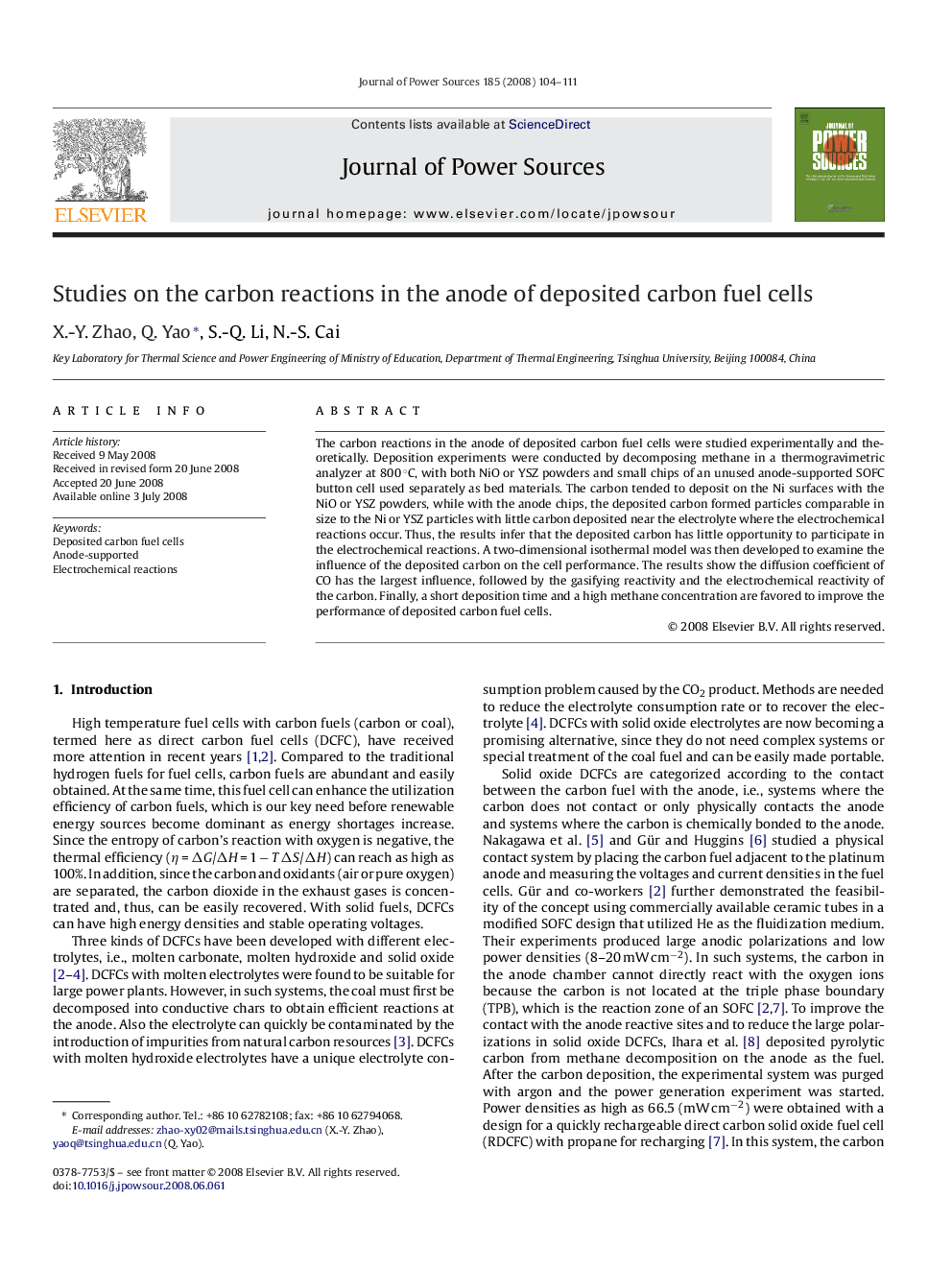| Article ID | Journal | Published Year | Pages | File Type |
|---|---|---|---|---|
| 1294387 | Journal of Power Sources | 2008 | 8 Pages |
The carbon reactions in the anode of deposited carbon fuel cells were studied experimentally and theoretically. Deposition experiments were conducted by decomposing methane in a thermogravimetric analyzer at 800 °C, with both NiO or YSZ powders and small chips of an unused anode-supported SOFC button cell used separately as bed materials. The carbon tended to deposit on the Ni surfaces with the NiO or YSZ powders, while with the anode chips, the deposited carbon formed particles comparable in size to the Ni or YSZ particles with little carbon deposited near the electrolyte where the electrochemical reactions occur. Thus, the results infer that the deposited carbon has little opportunity to participate in the electrochemical reactions. A two-dimensional isothermal model was then developed to examine the influence of the deposited carbon on the cell performance. The results show the diffusion coefficient of CO has the largest influence, followed by the gasifying reactivity and the electrochemical reactivity of the carbon. Finally, a short deposition time and a high methane concentration are favored to improve the performance of deposited carbon fuel cells.
